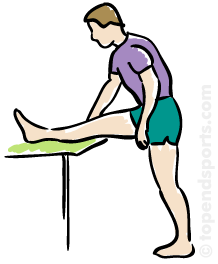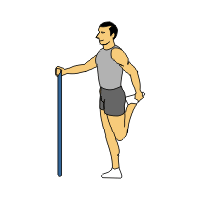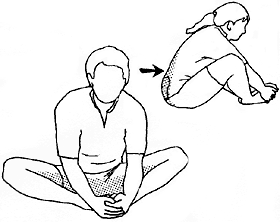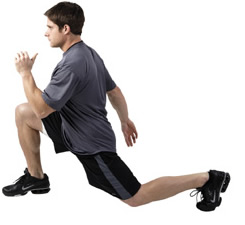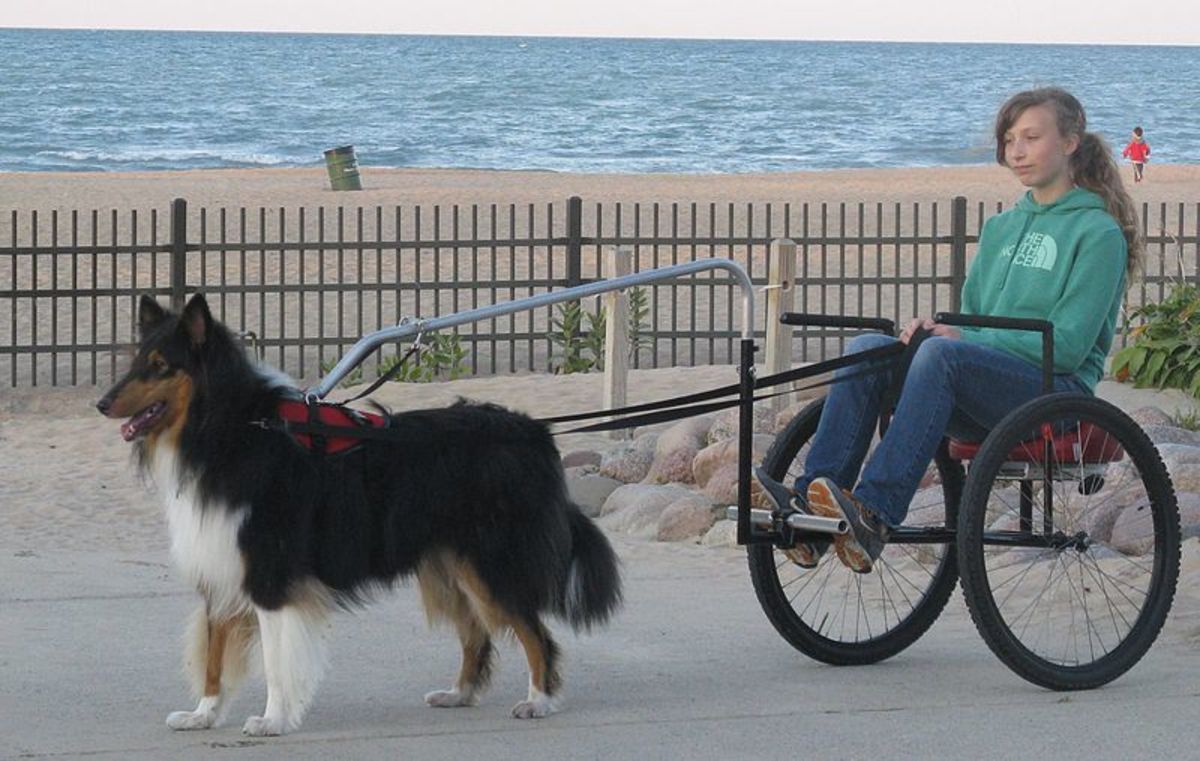Track - mastering the Hurdles in USATF is easy
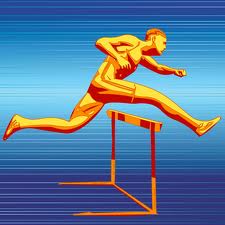
- Parkour vs. Freerunning
Parkour is popularly defined as traveling from point a to point b in the quickest way possible. People of all skill levels can partake in this ever growing sport, but it is important that those practicing it...
Let's make this quick
In track (USATF stands for USA Track and Field), the 110m, 300m, and 400m hurdles are a multi-tasking group of events that requires both speed and form. By the end of this, you should know exactly how to run over hurdles with perfect form. I'm not guaranteeing you a state track champion, but perfect form can cut your time by up to 10 seconds. The reason for this is that whenever you have good hurdling form, you don't lose any momentum after the jump. If bad form results in jumping high over the hurdle, momentum is shifted to vertically instead of horizontally. Jumping high over the hurdles will result in a double whammy because it slows you down and you have to get back up to speed after you land.
The point where your form comes most in handy is near the end of the race. Usually, everyone is too tired to keep their form, so they end up hopping over the last few jumps. This is definitely my favorite part of the race because I always pass people at the end thanks to my form.
Besides all of that, hurdling is just plain fun. I don't get it, but it is. I just really like the fact that I can run over a small obstacle, clear it, and keep running at full speed after I land. Other than the track and field races, I like to hurdle benches, signs, and anything else that is about waist level. But that is parkour, a whole different sport. If you want to learn more about that, check out my friends Hub to the right. As for now, let's get rolling on how to perfect that form.
Different Stretches
Click thumbnail to view full-size




Flexibility
Hurdling requires some good flexibility. it is important to stretch and warm up well before attempting them. It is not 100% necessary to stretch, but you make yourself very susceptible to pulling muscles and/or tearing them if you don't. The main muscles that you need to stretch good are your hamstrings, quads, and calves. It is crucial to run a lap, do some warm ups, some dynamic stretches (like high knees, butt kicks, and B skips), and then static stretching (stretching in one place). There are a few key stretches and dynamic warm ups that you should try to do every time before you go full speed.
Super Stretchyness - Stretching on the hurdle needs to be done right after you have done dynamic warm ups. First, you should put one leg on top of the hurdle to stretch your hamstrings. It's pretty self explanatory, but it is very important. While you are in the position, pull the top of your toes towards you to stretch your calves. Staying in the same position, twist your body to both sides for two more stretches on each leg. You want to try to push yourself in order to get a good stretch in.
Next, stretch your quads by standing up and bringing one foot up to the back of your hamstrings. Use your hand to pull your leg up. You then need to stretch your trail leg. To do this, bend your knee and bring it up to your side. You want to try to make a 90 degree angle with your leg on the ground and your other leg on the hurdle. It is basically the position that your trail leg needs to be in while you are gliding over the hurdle. To actually stretch your leg (I'm going to assume your trail leg is your leg left to explain it easier), face to the right of the hurdle and put your ankle and your knee on the hurdle. Once you get into this position, you can bend your right leg (lead leg) to get a better stretch.
Anther crucial muscle to limber up is your groin. The butterfly stretch should be good for that. Lastly, you need to do some lunges to stetch the very top and front part of your legs. In order to run through the hurdles, you need to be fairly flexible. You can stretch as much as you want, but make sure you always limber up the main muscles in your legs. You do not want to be tight right before you run.
Quizicle
If you run hurdles, how many run throughs do you do? If you do more than me, what else to you do?
Half speed run thoughs
There are only three different run throughs that I do before my race. I do a lead leg drill, trail leg drill, and a combination drill (all after jogging one lap - it gets your muscles warm and ready to stretch. You don't want to stretch cold muscles). I'm going to explain this as someone whose Right leg is their Lead leg and their Left leg is their Trail leg. Keep in mind that all of these drills are at a slow jogging speed.
The first drill is for your lead leg (right), start 5-10 yards away from the hurdle. Jog towards it while doing high knees. Jog to the left of the hurdle. When you are near it, bring your right knee up to your chest and kick it out in one fluid motion. The point of this is to over-exaggerate your front leg. After doing this a couple times to the side of the hurdle to get your confidence up, do the same drill with your leg going over the hurdle. When I do this drill, I jump off of my trail leg (left) to fully get over the hurdle. Doing this around 4-5 times should prepare you fairly well.
The next drill is for the trail leg (left). Perfecting the trail leg is what will really cut down on your time. The reasoning for this is because the more you can bring your trail leg to the side rather than under you, the quicker you will be able to clear the hurdle. The main points that you want to get are to bring your trail leg to your side (away from your body) and to get it down on the ground immediately after you clear the hurdle so that you don't lose your momentum. This drill is almost the exact same as the other one except that it's on the other side. This time, jog on the right side of the hurdle. When you get close, jump off of your left leg to get a little air. In the same motion, bring your left leg up and over the hurdle, trying to keep it as horizontal as you can. By this, I mean that you need to try to move your trail leg only in the horizontal direction. You do not want any part of your leg under your waist. This may be a little hard to do at first, so it might be necessary to stand next to the hurdle to practice the drill in slow motion a couple of times.
After practicing both legs, the lead and the trail, it is time to put it all together. The next one is for both legs. This one is mainly a confindence booster. I like it because it makes you look really good and it is really easy. You want to go at the same pace as the other two drills (slow jogging), but instead of going to the right or left of the hurdle, you want to go straight through it. You basically want to combine both of those drills that I talked about above. After you do it a couple times at jogging speed, try it full speed. This drill is where you can really practice your form, which I'll tell you about next.
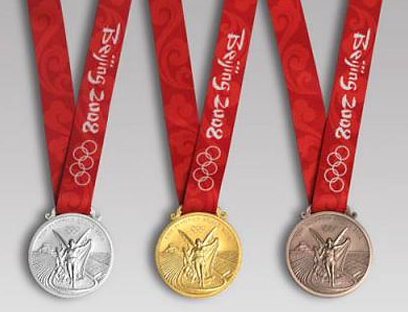
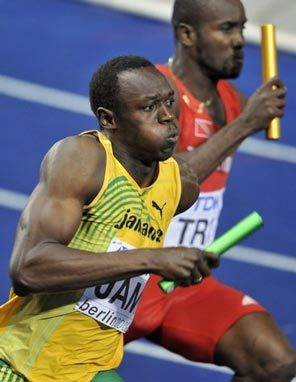
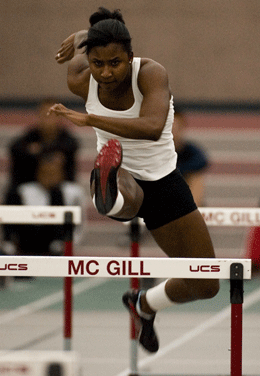
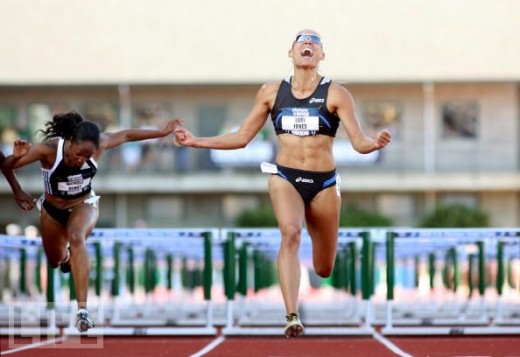
Go for the Gold!!
Now that you know some key stretches and warm ups, it's time to annihilate people in some usatf races. Ultimately, overall speed and endurance has the biggest impact on how well you do in the race, but your form can make you amazing even if you aren't fast. At your track field practice, you might need to stay late to work on this race. I suggest running 50m longer than the actual race to get you in shape really fast. It's going to really suck the first week or two, but it will be totally worth it when you are leaving everybody in your dust's dust at the meet. If you can't do that, then start out with a couple of hurdles and run them full speed. Then start adding one more hurdle each day or two until you are at the full distance of the race. Other than that, form is what really decides the men from the boys in the Track and Field hurdles. There are only about 7 different parts to it. They are as follows:
1. Steps - This technically has nothing to do with your form, but I have to include it because it is so important. It is very crucial to count out your steps as you are running the race. If you run the same number of steps in between each hurdle, you won't have to worry about getting at the right distance to pass the jump with no decrease in speed. For example, I run the 300m hurdles, and my best time is 40.5 s. I achieve this time with 21 steps before the first hurdle and 15 steps in between all the other hurdles. I would have a better time, but I always die (lose all energy and start slowing down) at the end. Granted, I still win my races because my form helps me finish the race faster than anyone else. It is important to count steps and try to be consistent throughout the race. Another reason is because it will let you know if you are slacking or not.
2. Lead leg - This is the same motion as the stretch for the hamstrings that I explained earlier. You want to be as close to the hurdle as you can without touching it. Try to be keep your leg parallel with the ground. It's pretty self explanatory, but staying low will make you faster.
3. Arms (Part 1) - This part occurs at the same time as your lead leg. (Assuming your right leg=lead leg) I am going to tell you what to do to explain how I want your arms to be. Pretend like you are eating your left wrist (where your watch should be). Now drop your arm about 6 inches. That is close to what your left arm should be like. As for your right arm, the main thing is to not flail it around. Make sure it only goes straight forward and straight backward. You want the general shape of your arm to have your elbow facing directly behind you and your hand facing downward. Once again, this fluid motion should occur at the same time as the lead leg.
4. The "Bend" - I am refering to your upper body with this. As you are gliding over the hurdle, you want to bend your upper body so that your right knee and your face are only inches apart, with your left hand in the middle. Don't overdo it and dome yourself in the face, just be reasonable. It will help with a little part of the speed.
-Keep in mind, as this is all happening, your trail leg is slowly moving up to the top of the hurdle.
5. Trail leg - Using the form that was shown in the drills earlier, this should be natural. Make sure your trail leg is not under your waist because failure to do so will make you jump higher or even hit the hurdle. You need to have your leg come up to your side. Another minor detail that will allow you to jump lower has to do with your foot. You want your toes extended as far as you can. If you don't know what I am talking about, try to touch the bottom of your toe to your heel. That is how your foot should be.
6. Arms (Part 2) - This is crucial to getting your trail leg completely over the hurdle. If you have trouble hitting the hurdles with your ankles, this might be your problem. As of now, you are eating your left wrist (where your watch should be), and your right arm is at a 90 degree angle facing downwards. The next arm movement has to be explosive. You want to throw your right arm forwards as fast as you can, making sure to keep it in the the 90 degree angle. At the same time, quickly move your left arm to the position your right arm was previously in. It should be natural if you just throw your right arm in front of you. This move is crucial because it helps you bring your lead leg over the hurdle and up to your chest. It needs to be explosive because you need an extra boost of energy to get that leg over the hurdle.
7. Trail leg - "The Finisher" - If you have done everything else correctly, you should have landed your lead leg on the ground and sucessfully jumped over the hurdle. Your right arm should have propelled your left leg forward and over the hurdle. In the same motion, you need to bring your trail leg out of the horizontal position and down to the ground immediately after clearing the hurdle. The number of steps that you want to have in between each hurdle greatly depends on how well you can do this. The advantage in getting your trail leg on the ground fast is that you do not lose any momentum at all. Some people make the mistake of trying to bring their trail leg up to their chest so that they can have a big first step after they land. This is good except that you lose a lot of momentum this way. The main thing you want to remember for this part is to get your back leg over the hurdle and on the ground as fast as you possible can.
That is all the basic parts of hurdling. It's not a lot of things to do, but knowing how to do them will give you a huge advantage compared to another track athlete. Now go win some races!!
Things to know if you want to hurdle
It is very important to get good tennis shoes for practicing these. It is worth it to spend the extra $40 on tennis shoes because feet are so easy to injure. If you want examples of good shoes, check out the shoes from Amazon to the right. Especially with this event, the arch of your foot is in danger. I don't know why, but hurdlers are very susceptible to getting stress fractures in the arches of their feet. Along with getting really good tennis shoes, I suggest getting some good quality insols (ones that have arch supports) to put in your tennis shoes and track cleats. Track cleats are the worst about causing stress fractures because they provide almost no support for your feet. It's not beneficial to practice in them unless you are doing hand offs for relays. They also cause shin splints if you run in them too much. A good way to remedy this problem can be to run on grass with good quality tennis shoes instead of on a track because the grass is a softer surface than the track. Note - this will not heal shin splints, it is just a way to avoid them if you their symptoms. Other than that, hurdling does not require a lot. All you need is a good pair of tennis shoes, some arch supported insols, a hurdle or two to practice with, and some track cleats for the meets.
Now that you know the ins and outs of how to glide over hurdles, I hope you are willing to try this fun USATF event out!! It takes a little while to get the form down, but don't give up. I write this in hopes that you can have as much fun in Track and Field as I have had over my last 4 years of high school!! And just to let you know, only about half of the track athletes who do hurdles can clear them with decent form. If you start learning now, you'll be kicking their butts in no time!! Go try it out!!
- Wood sculpture: It's an easy thing
Hello my fellow hubbers. I'm going to tell you today about a whole new world that I discovered in my art class this year. It is wood sculpting. You can create anything from small aesthetic pieces to useful...
You want more??
If you liked reading this, then check out some of my other Hubs
TAGS:usatf,hurdles,300mH,track and field,usatf,400mH,track,hurdles,300mH,usatf,400mH,hurdles,usatf,track,usatf,hurdles,300mH,400mH,usatf,hurdles,track,usatf,hurdles,usatf,300mH,usatf,track,field,usatf,300mH,400mH,usatf,hurdles
Before you go
And if you found this article helpful, please remember to:
- Rate it up
- Share it with your networks and friends
- Leave a comment or question

